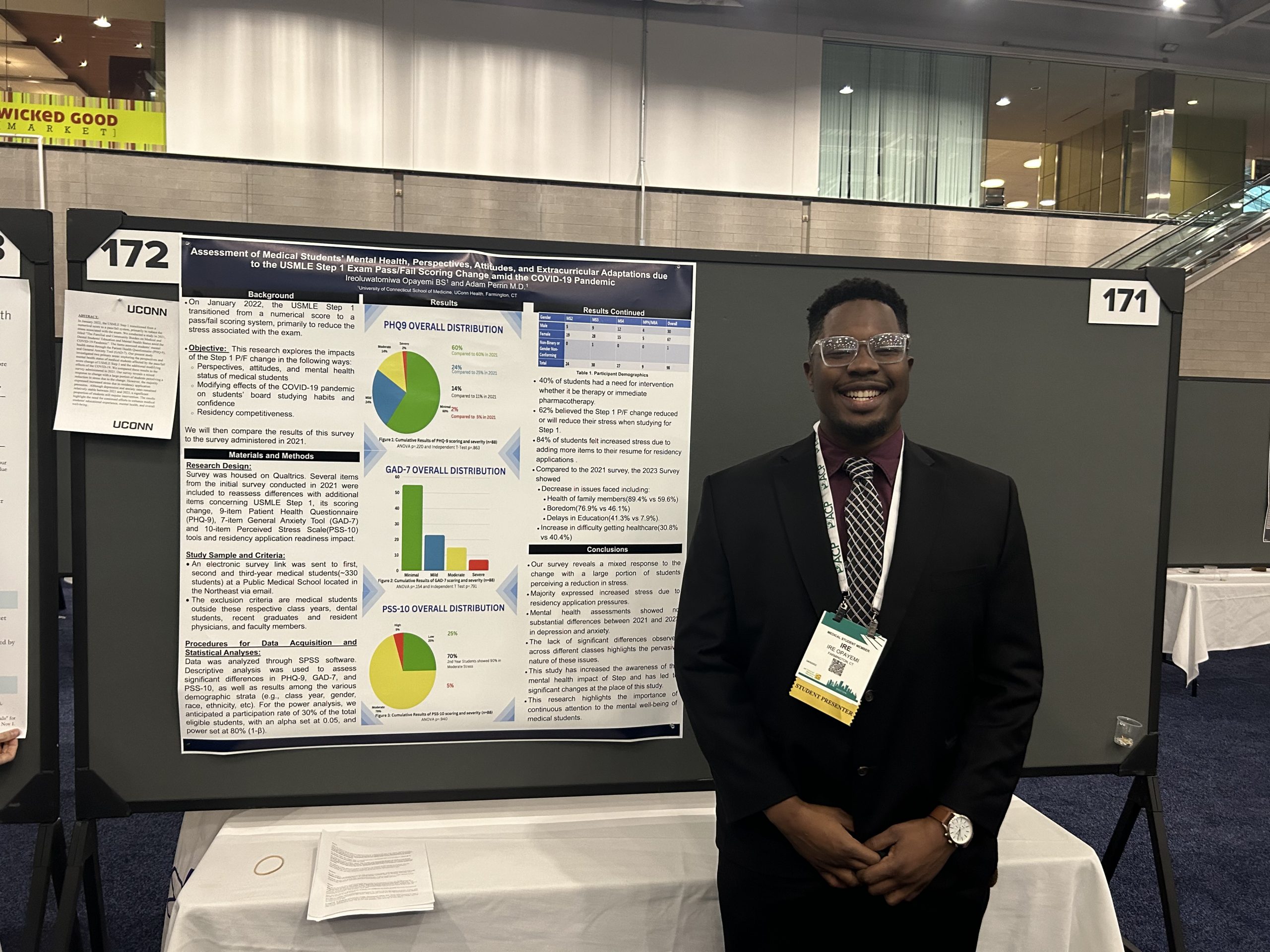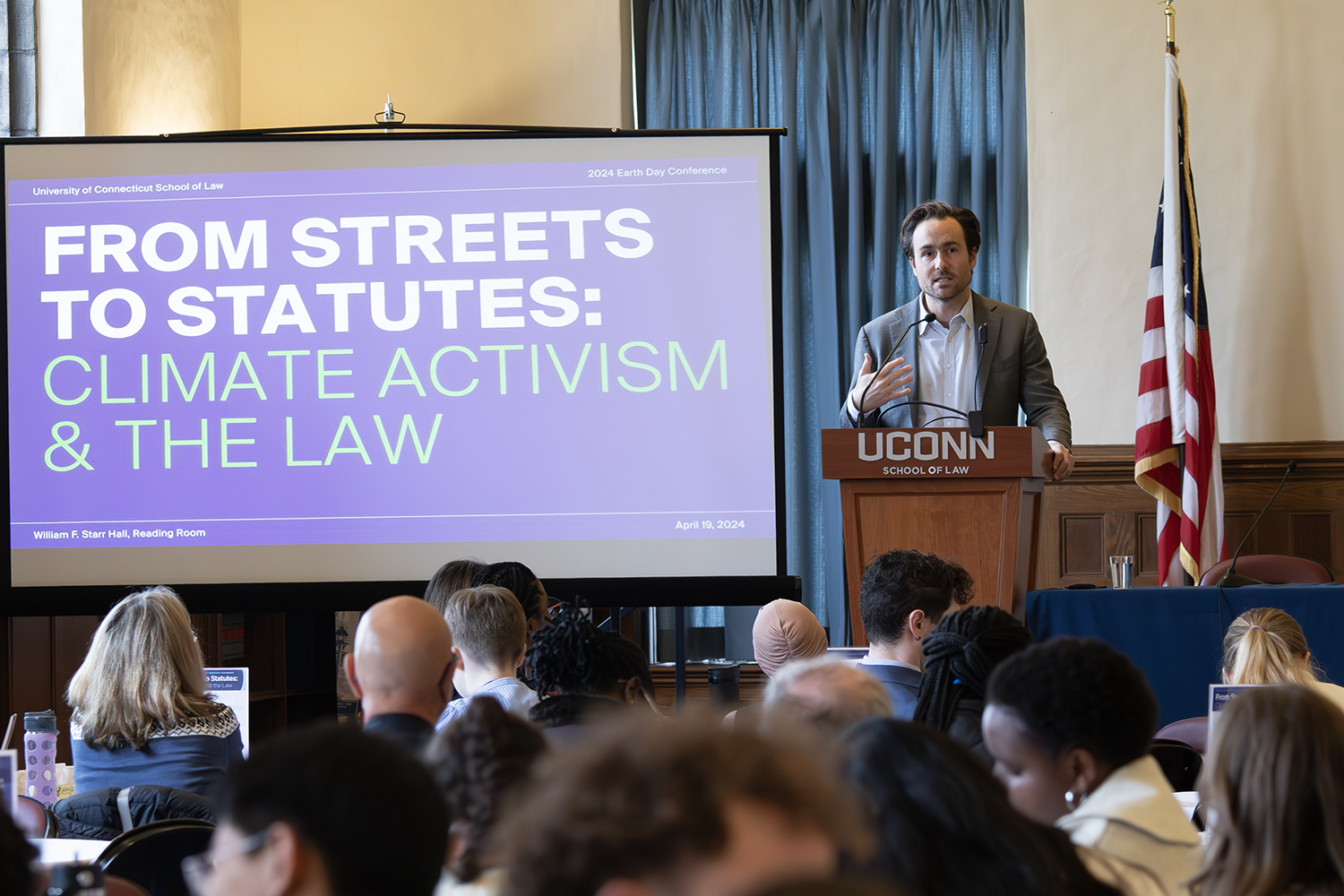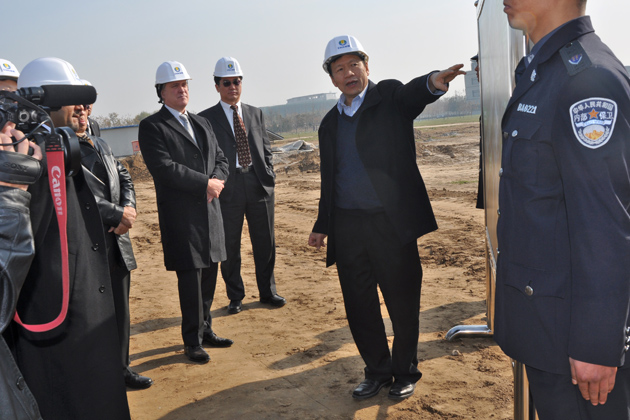
Zhongxue Gan ’92 MS, ’95 Ph.D. is chief scientist for one of China’s largest renewable energy companies, which is committed to building stronger relationships between China and the U.S.
It might be said that Zhongxue Gan’s life as a scientist and researcher was preordained. After all, the very meaning of Zhongxue in Chinese is “loyal to learning and study.”
It is a mission Gan ’92 MS, ’95 Ph.D. takes seriously, and one that has propelled him from the farmlands of northern China’s Hebei province into the laboratories of UConn’s School of Engineering and ultimately, to his current post as chief scientist for one of China’s largest renewable energy companies.
Gan serves as vice chairman of the board and chief technology officer for the ENN Group, an international clean energy conglomerate with more than 100 subsidiaries in over 100 cities across China and overseas. With assets of $7 billion and more than 27,000 employees, ENN continues to expand its operations globally, including an investment of $4 billion to $5 billion toward the development of a clean energy ecological center on 9,000 acres in Nevada’s Mojave Desert.
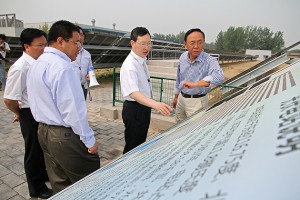
The project includes construction of a 720-megawatt solar energy farm, a 1,000,000-square-foot solar panel manufacturing plant, and an industrial park. Once fully operational, the Mojave Green Center is expected to create 2,000 high-paying manufacturing jobs and provide reliable green energy to about 200,000 homes.
Gan, an American citizen who launched his U.S. professional career building advanced robotic controls for the ABB Group in Windsor, Conn., says the expansion is part of ENN’s commitment to promoting clean energy solutions and building stronger relationships between China and the United States.
“In the past, we would manufacture solar panels in China and then just sell the products to the United States,” says Gan, who was inducted into UConn’s Academy of Distinguished Engineers in 2010. “This time, we decided to invest money in Nevada so we can build a manufacturing base, increase local employment, and build revenue for the area. We want to create an example to show how Chinese and American people can work together to resolve a situation. That was our driving force.”
Gan moved back to China in 2004 to lead ENN’s burgeoning research division. At the time, ENN was mainly a supplier of natural gas, delivering heating and cooking fuels to 5.6 million households and 18,000 industrial and commercial customers. Gan, who today holds 17 U.S. patents and has 40 more patent applications pending in China, led the company’s expansion into renewable energy, and he brought along several of his UConn School of Engineering colleagues to help in the effort.
UConn expertise in China
Today, including Gan, more than half a dozen UConn engineering alums and former postdoctoral fellows are currently serving in different leadership positions at ENN, among them: Yunquan Sun ’96 MS, ’04 Ph.D., president of ENN Group North America and vice president of ENN Solar Energy; Qing Tang ’94 Ph.D., vice president of ENN Solar Energy; Weiping Wang ’98 Ph.D., president of ENN Medical; Zhenqi Zhu ’95 Ph.D., deputy general manager of ENN Intelligent Energy; former UConn postdoc De-ling Zhou, COO of ENN Solar Energy; and former UConn postdoc Xinbo Huang, director of new product development at ENN Solar.
Gan says each individual brings with them advanced knowledge gleaned from their studies at UConn, with specialties ranging from mechanical engineering to solar cell development to chemistry, materials science, and systems analysis.
In recent years, ENN has emerged as a world leader in the manufacture of large, thin-film solar-energy photovoltaic panels; it has developed advanced microalgae technologies for the creation of biofuel; and its “Sys-energy Efficiency” platform – a brainchild of Gan and his research team, which uses smart energy technology to maximize energy production and distribution systems while reducing harmful emissions – has become one of ENN’s trademark technologies.
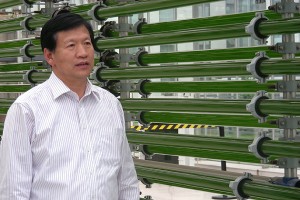
Rather than have separate systems operating independently when producing, transmitting, storing, and recycling energy, the “Sys-energy” approach links all the processes together. Using state-of-the-art control systems, Sys-energy Efficiency ensures that minimal amounts of energy are wasted, and energy resources are used to maximum efficiency.
Some existing coal plants, Gan says, operate only at 20 percent of their potential efficiency. His goal is to make those systems more than 90 percent efficient, while repurposing byproducts from the process and protecting the environment from harmful emissions.
The “Sys-energy” approach, he says, can be applied to small projects, such as maximizing the efficiency of a few solar panels on a person’s roof to keep energy bills down, or larger ones, such as rerouting and putting to use massive quantities of hydrogen and methanol byproducts created in the conversion process.
ENN’s work on this front has drawn international attention. In 2009, U.S. Energy Secretary Steven Chu toured ENN’s solar panel manufacturing facility and coal-based “Zero Emissions” Technology Pilot Plant. There, he observed how the company is using solar energy to grow massive quantities of algae, which gorge themselves on the carbon dioxide emitted from coal-fired power plants and factories. The algae are then processed into clean-burning biodiesel fuels. This integrated use of multiple energy resources and applications is one of the key components of ENN’s holistic approach to renewable energy.
U.S. interest in ENN remains strong. Last year, ENN chairman Wang Yusuo hosted a visit by U.S. Senate Majority Leader Harry Reid to the company’s headquarters in Langfang near Beijing, and he spoke at the National Clean Energy Summit in Nevada, where Vice President Joe Biden was in attendance.
Advancing the Future of Renewable Energy
As part of its continuing expansion into the United States, ENN Solar Energy has partnered with the National Energy Renewable Corp. to convert a New Jersey landfill into a 4.3-megawatt solar farm.
And in another development last year, U.S. Secretary of State Hilary Rodham Clinton presided over a signing ceremony at which the ENN Group joined forces with Duke Energy – one of the largest electric power holding companies in the U.S. – to form an “EcoPartnership” with the city of Charlotte, N.C. Together, the two companies plan to collaborate on the development of green cities in China and the U.S. through solar energy projects, smart grid technologies, and energy efficiency initiatives.
“Through the comprehensive utilization of wastelands, such as landfills, abandoned industrial sites, and deserts, we can develop and build substantial ground-mounted solar power plants that advance the future development of clean power,” ENN Solar Energy COO and former UConn postdoc De-Ling Zhou says, referring to the New Jersey initiative and other projects.
ENN has ongoing research collaborations with UConn, MIT, Harvard, and Stanford. In UConn’s School of Engineering, Peter Luh, SNET Professor of Communications and Information Technologies, is working with ENN Solar on the Mojave Green Center project. ENN also recently entered into a $1.5 million agreement with the School of Engineering to sponsor two to five doctoral students a year over a five-year period. The students – called “energy innovators in training” – specialize in energy technologies and are being co-advised by researchers from both UConn and ENN.
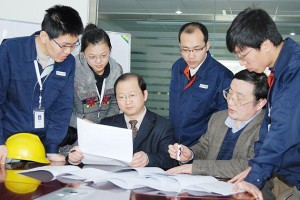
Professor Kazem Kazerounian, interim dean of the School of Engineering and one of Gan’s former faculty advisors in mechanical engineering, says the School is interested in expanding its relations with ENN, possibly by providing education and training programs in sustainable energy, biotechnologies, or in other areas.
The initial link between UConn and ENN originated, Gan says, with Mun Choi, School of Engineering dean and professor, who is currently interim provost of the University. Choi traveled to Langfang in 2010 to participate in a signing ceremony honoring the UConn-ENN partnership. “He is a visionary man,” says Gan.
“Drs. Gan and Sun and Professor Kazerounian have established an excellent relationship that is now blossoming into sustainable energy projects ranging from smart infrastructures to energy storage systems,” says Choi. “It is very exciting for us to pursue sustainable energy projects with a world leader like ENN.”
Says Gan, “Our philosophy is that we can’t rely on one kind of power to resolve all of our energy problems. We cannot only depend on solar. We cannot only depend on wind. We cannot depend only on renewable power. At the same time, we don’t believe you can eliminate fossil fuels. So our goal is to combine them, integrate the fossil, the solar, the renewable energy – the traditional and the new – create a total systemic solution for power generation, transmission, and application, and put controls inside it to manipulate it and make it better.”
It’s a heavy charge, but one Gan the scientist, the man “loyal to study and learning,” embraces.

